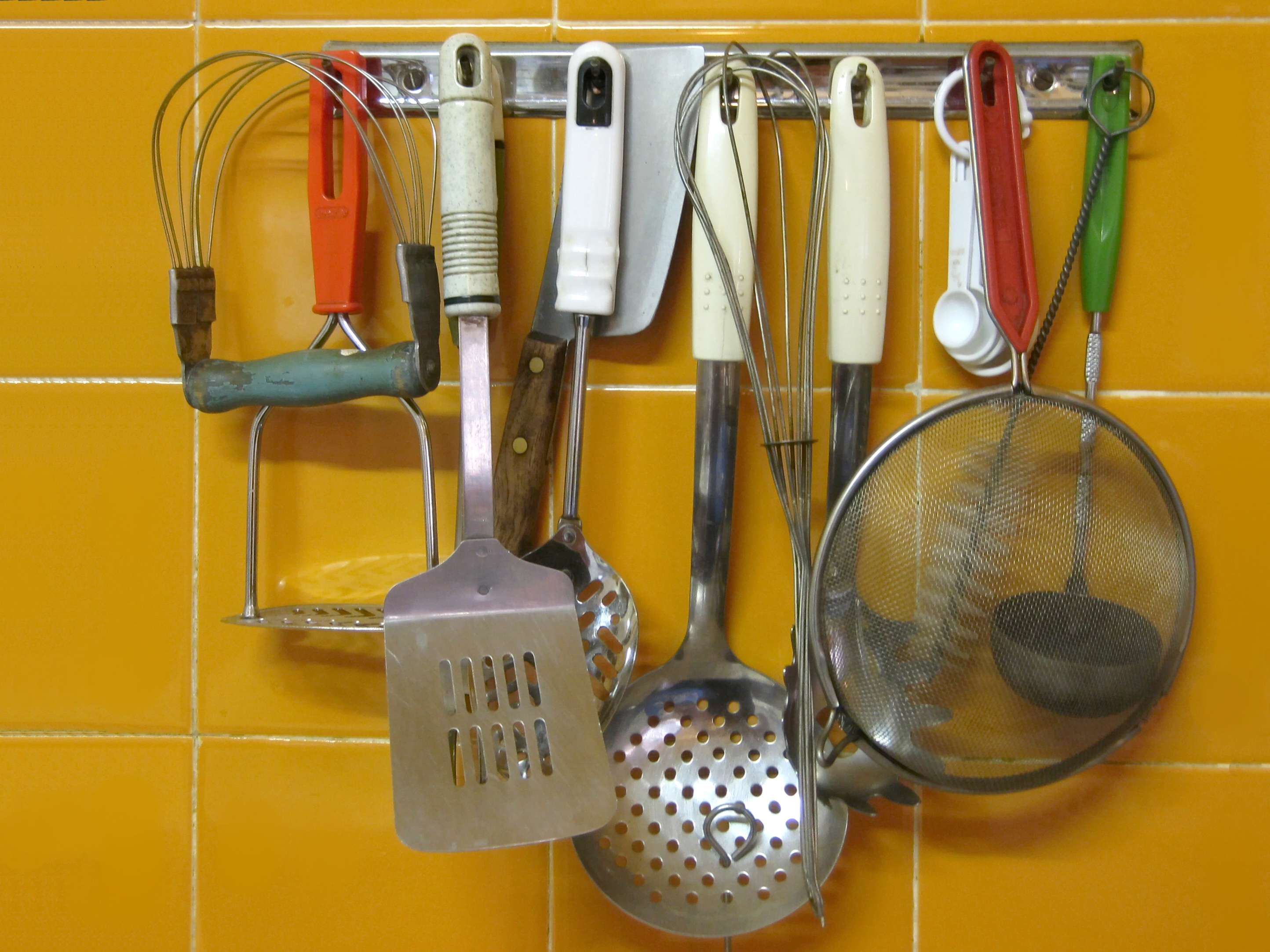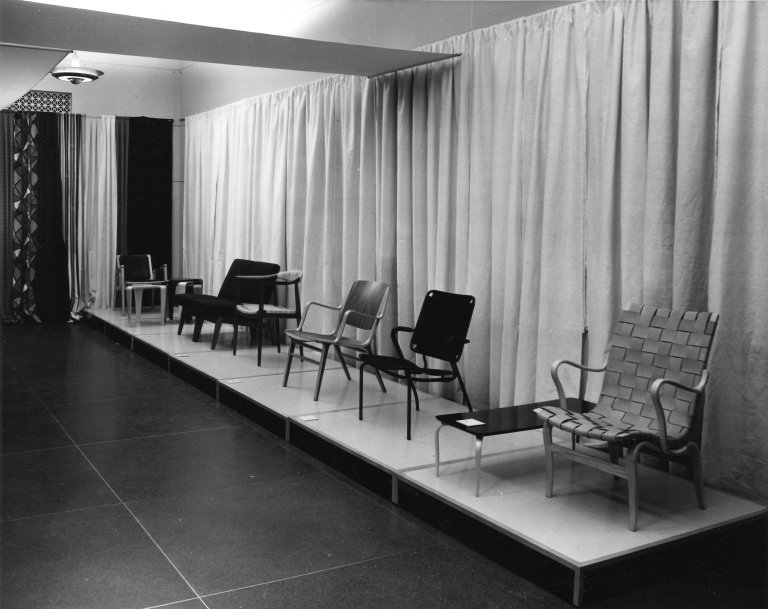|
Arabia (brand)
Arabia is a Finnish ceramics company, founded in 1873 by Rörstrand, and currently owned by Fiskars. Arabia has specialized in kitchenware and tableware. The original Arabia porcelain factory was located in Toukola (Helsinki). It later housed the Aalto University School of Arts, Design and Architecture. Ulla Procopé, Esteri Tomula and Kaj Franck were among the best-known artists and designers for the company. In 2016 the Arabia factory in Finland closed. All Arabia products are now made in Thailand and Romania. Noted designers * Ulla Procopé * Esteri Tomula *Kaj Franck * Heikki Orvola * Birger Kaipiainen *Friedl Kjellberg * Raija Uosikkinen (1923–2004) *Inkeri Leivo (1944–2010) *Heljä Liukko-Sundström (1938–) *Richard Lindh (1929–2006) *Tove Slotte File:Arabian vanha tehdasrakennus.jpg, Old Arabia factory building in Helsinki File:Paratiisi.jpg, An Arabia brand ''Paratiisi''-series sauce pitcher File:Arabia teekannu Taika.jpg, Teapot ''Taika'' (1970s) See al ... [...More Info...] [...Related Items...] OR: [Wikipedia] [Google] [Baidu] |
Romania
Romania ( ; ro, România ) is a country located at the crossroads of Central Europe, Central, Eastern Europe, Eastern, and Southeast Europe, Southeastern Europe. It borders Bulgaria to the south, Ukraine to the north, Hungary to the west, Serbia to the southwest, Moldova to the east, and the Black Sea to the southeast. It has a predominantly Temperate climate, temperate-continental climate, and an area of , with a population of around 19 million. Romania is the List of European countries by area, twelfth-largest country in Europe and the List of European Union member states by population, sixth-most populous member state of the European Union. Its capital and largest city is Bucharest, followed by Iași, Cluj-Napoca, Timișoara, Constanța, Craiova, Brașov, and Galați. The Danube, Europe's second-longest river, rises in Germany's Black Forest and flows in a southeasterly direction for , before emptying into Romania's Danube Delta. The Carpathian Mountains, which cross Roma ... [...More Info...] [...Related Items...] OR: [Wikipedia] [Google] [Baidu] |
Culture In Helsinki
Culture () is an umbrella term which encompasses the social behavior, institutions, and norms found in human societies, as well as the knowledge, beliefs, arts, laws, customs, capabilities, and habits of the individuals in these groups.Tylor, Edward. (1871). Primitive Culture. Vol 1. New York: J.P. Putnam's Son Culture is often originated from or attributed to a specific region or location. Humans acquire culture through the learning processes of enculturation and socialization, which is shown by the diversity of cultures across societies. A cultural norm codifies acceptable conduct in society; it serves as a guideline for behavior, dress, language, and demeanor in a situation, which serves as a template for expectations in a social group. Accepting only a monoculture in a social group can bear risks, just as a single species can wither in the face of environmental change, for lack of functional responses to the change. Thus in military culture, valor is counted a typical be ... [...More Info...] [...Related Items...] OR: [Wikipedia] [Google] [Baidu] |
Companies Based In Helsinki
A company, abbreviated as co., is a legal entity representing an association of people, whether natural, legal or a mixture of both, with a specific objective. Company members share a common purpose and unite to achieve specific, declared goals. Companies take various forms, such as: * voluntary associations, which may include nonprofit organizations * business entities, whose aim is generating profit * financial entities and banks * programs or educational institutions A company can be created as a legal person so that the company itself has limited liability as members perform or fail to discharge their duty according to the publicly declared incorporation, or published policy. When a company closes, it may need to be liquidated to avoid further legal obligations. Companies may associate and collectively register themselves as new companies; the resulting entities are often known as corporate groups. Meanings and definitions A company can be defined as an "artificial per ... [...More Info...] [...Related Items...] OR: [Wikipedia] [Google] [Baidu] |
Manufacturing Companies Of Finland
Manufacturing is the creation or production of goods with the help of equipment, labor, machines, tools, and chemical or biological processing or formulation. It is the essence of secondary sector of the economy. The term may refer to a range of human activity, from handicraft to high-tech, but it is most commonly applied to industrial design, in which raw materials from the primary sector are transformed into finished goods on a large scale. Such goods may be sold to other manufacturers for the production of other more complex products (such as aircraft, household appliances, furniture, sports equipment or automobiles), or distributed via the tertiary industry to end users and consumers (usually through wholesalers, who in turn sell to retailers, who then sell them to individual customers). Manufacturing engineering is the field of engineering that designs and optimizes the manufacturing process, or the steps through which raw materials are transformed into a final product. ... [...More Info...] [...Related Items...] OR: [Wikipedia] [Google] [Baidu] |
Kitchenware Brands
:'' For a record label, see Kitchenware Records'' Kitchenware are the tools, utensils, appliances, dishes, and cookware used in food preparation, or the serving of food. Kitchenware can also be used in order to hold or store food before or after preparation. Types Kitchenware encompasses a wide range of tools. Some of the most common items of kitchenware are: See also * Batterie de cuisine * Cookware and bakeware * Gastronorm, a European size standard for kitchenware * List of cooking vessels * List of eating utensils * List of food preparation utensils * List of glassware * List of Japanese cooking utensils * List of serving utensils * List of types of spoons * NSF International, formerly "National Sanitation Foundation" * Tableware Tableware is any dish or dishware used for setting a table, serving food, and dining. It includes cutlery, List of glassware, glassware, serving dishes, and other items for practical as well as decorative purposes. The quality, nature ... [...More Info...] [...Related Items...] OR: [Wikipedia] [Google] [Baidu] |
Finnish Brands
Finnish may refer to: * Something or someone from, or related to Finland * Culture of Finland * Finnish people or Finns, the primary ethnic group in Finland * Finnish language, the national language of the Finnish people * Finnish cuisine See also * Finish (other) * Finland (other) * Suomi (other) Suomi means ''Finland'' in Finnish. It may also refer to: *Finnish language * Suomi (surname) * Suomi, Minnesota, an unincorporated community * Suomi College, in Hancock, Michigan, now referred to as Finlandia University * Suomi Island, Western ... * {{disambiguation Language and nationality disambiguation pages ... [...More Info...] [...Related Items...] OR: [Wikipedia] [Google] [Baidu] |
Ceramics Manufacturers
A ceramic is any of the various hard, brittle, heat-resistant and corrosion-resistant materials made by shaping and then firing an inorganic, nonmetallic material, such as clay, at a high temperature. Common examples are earthenware, porcelain, and brick. The earliest ceramics made by humans were pottery objects (''pots,'' ''vessels or vases'') or figurines made from clay, either by itself or mixed with other materials like silica, hardened and sintered in fire. Later, ceramics were glazed and fired to create smooth, colored surfaces, decreasing porosity through the use of glassy, amorphous ceramic coatings on top of the crystalline ceramic substrates. Ceramics now include domestic, industrial and building products, as well as a wide range of materials developed for use in advanced ceramic engineering, such as in semiconductors. The word "''ceramic''" comes from the Greek word (), "of pottery" or "for pottery", from (), "potter's clay, tile, pottery". The earliest known ment ... [...More Info...] [...Related Items...] OR: [Wikipedia] [Google] [Baidu] |
Finnish Design
Scandinavian design is a design movement characterized by simplicity, minimalism and functionality that emerged in the early 20th century, and subsequently flourished in the 1950s throughout the five Nordic countries: Denmark, Finland, Norway, Sweden, and Iceland. Scandinavian designers are known especially for household goods including furniture, textiles, ceramics, lamps, and glass, but Scandinavian design has been extended to industrial design such as of consumer electronics, mobile phones, and cars. Overview In 1914, the Danish ''Selskabet for Dekorativ Kunst'' (Company for Decorative Arts) launched its ' (literally "Graceful Work") magazine. Its title became the name of a new Danish style of arts and crafts, both in objects and in architecture, to rival Art Nouveau and Jugendstil. From the 1930s, designers such as Alvar Aalto (architecture, furniture, textiles), Arne Jacobsen (chairs), Borge Mogensen (furniture), Hans J. Wegner (chairs), Verner Panton (plastic chai ... [...More Info...] [...Related Items...] OR: [Wikipedia] [Google] [Baidu] |
Porcelain Manufacturing Companies In Europe
Porcelain manufacturing companies are firms which manufacture porcelain. European porcelain manufacturers before the 18th century The table below lists European manufacturers of porcelain established before the 18th century. This table may be sorted according to the year of foundation, description and country. 18th-century European porcelain manufacturing companies The table below lists European manufacturers of porcelain established in the 18th century. This table may be sorted according to the year of foundation, description and country. }; defunct as of 2011 , --- , , 1793, , Mintons, , Stoke-on-Trent, , England, , United Kingdom , --- , , 1794, , Thun 1794, , Klášterec nad Ohří, , Czech Republic, , Chomutov District , --- , , 1794, , Königlich privilegierte Porzellanfabrik , , Tettau, , Germany, , Bavaria , --- 19th-century European porcelain manufacturing companies The table below lists European manufacturers of porcelain established in the 19th century. This table ... [...More Info...] [...Related Items...] OR: [Wikipedia] [Google] [Baidu] |
Arabianranta
Arabianranta (; sv, Arabiastranden; literally meaning the "shore of Arabia"), sometimes simply Arabia, is a residential part of Helsinki, Finland. It is bound by Vanhankaupunginlahti bay from east, and connects to neighboring boroughs of Vanhakaupunki in north, Hermanni in south and Toukola and Kumpula in west. It is part of the greater Toukola region. The City of Helsinki requires all developers in the Arabianranta area to use 1-2% of the building investments of individual sites for works of art. This rule has been followed since the launching of development in the area 2000. Therefore, works of arts are visible around the district. Artists, designers and craftsmen put their stamp on buildings, objects and a communal spirit that gives energy. The district is mainly divided into three hubs. The Hämeentie Factory District is the heart of the Arabia region where you can find an unbroken tradition of design. At the southern end of Arabia, there is the Toukolanranta (swe. ''Ma ... [...More Info...] [...Related Items...] OR: [Wikipedia] [Google] [Baidu] |
Friedl Kjellberg
Friedl Kjellberg ( Holzer, from 1932 Holzer-Kjellberg; 24 October 1905 — 11 September 1993) was an Austrian-Finnish ceramicist, noted especially for her work with the so-called 'rice grain' method of porcelain-making. Career Friedl Holzer studied art and design in her native Austria, at the ''Kunstgewerbeschule'' design school in Graz, and upon graduating was offered a position as a designer at the Arabia ceramics manufacturer in Helsinki, Finland. She joined the company in 1924, and stayed there her entire career, until her retirement 46 years later in 1971. In 1932, Friedl Holzer married her colleague at Arabia, engineer Erik Kjellberg, and was thereafter alternately known both as Friedl Kjellberg and Holzer-Kjellberg. Kjellberg's design style has been characterised as 'modern classicism'; based on tradition, but tempered by clean simplicity. She is known to have been inspired and influenced throughout her life by the methods and shapes of Chinese ceramics. In contrast t ... [...More Info...] [...Related Items...] OR: [Wikipedia] [Google] [Baidu] |






